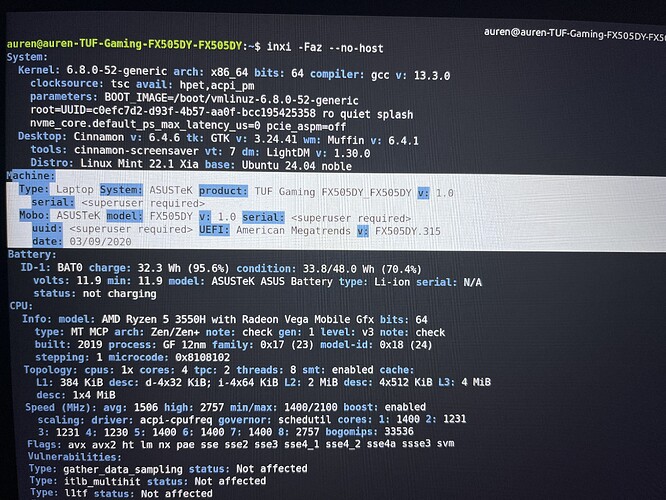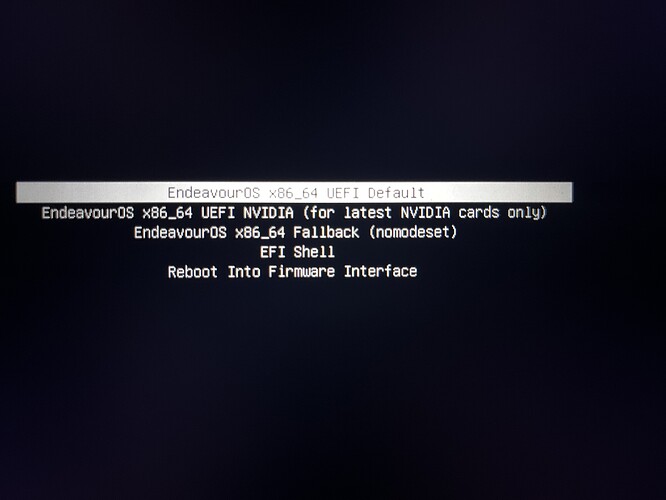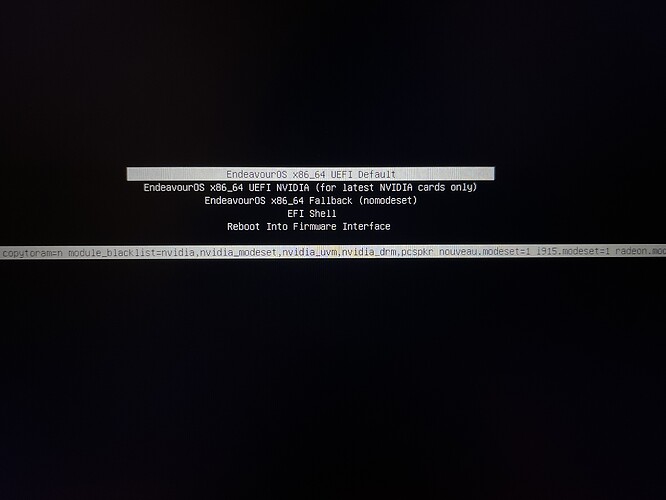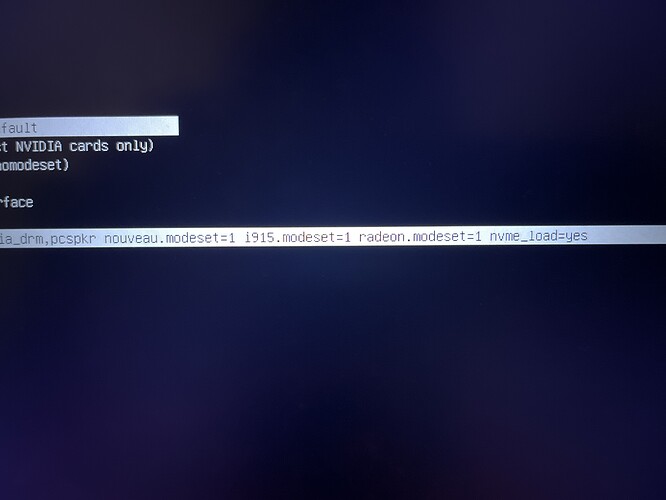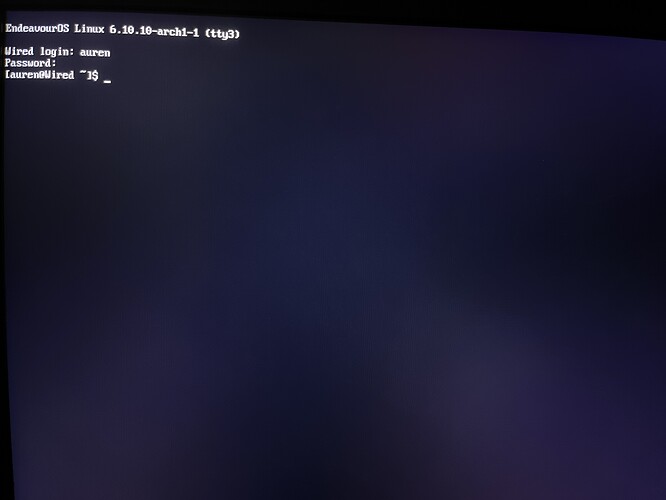I tried booting up eos, but whenever I selected it from the grub boot menu and tried to start it up, it always froze at the line “A start job is running for monitoring of lvm2 mirrors… etc” line after 30 seconds pass.
Welcome to the community @AurenQ84 ![]()
![]()
![]()
Are you able to provide a precise hardware model for your Asus laptop? It might also help us, if you could gather some additional hardware details by booting to another Linux distro and running:
inxi -Faz --no-host
Referencing @ricklinux’s offered solution here, can you now try adding these kernel parameters in the EndeavourOS Live ISO Grub menu?
Do that be pressing TAB on one of the Grub menu entries.
Edit: or e on a systemd-boot menu.
This is essentially taking the working kernel parameters from that booting Linux you got those details from, and applying it to the EndeavourOS Live ISO:
nvme_core.default_ps_max_latency_us=0 pcie_aspm=off
Do you mean here? Tab wasn’t doing anything on the normal grub screen, but there was an option to open the EFI shell
When I press TAB on one of the Grub entries, it allows me to edit these parameters below, like such:
At I see. Mine looks like this instead, so I might have either mistook what a grub menu meant, or it’s just different for some reason. Not sure if this has any correlation, but I also have Linux Mint still on my laptop atm
Ah all good. I have been trialling this in a VM and I had EFI disabled so I was getting a different menu. My mistake, I should have had that enabled.
I’ll need to investigate how to insert those parameters into the systemd-boot menu, hopefully someone else can offer some thoughts?
To add the kernel parameters to systemd-boot if this is an installed system using systemd-boot.
Add the entries to /etc/kernel/cmdline then run sudo reinstall-kernels Then you will have to reboot to see if the kernel parameters have any effect.
You might try pressing e at the boot menu to edit an entry (for that boot only, not permanent).
You can use
tandTwhile in the menu to adjust the menu timeout andeto edit the kernel parameters for this boot. Presshto see a short list of useful hotkeys. See systemd-boot(7) § KEY BINDINGS for the full list of available key bindings inside the boot menu.
Source:
https://wiki.archlinux.org/title/Systemd-boot#Keys_inside_the_boot_menu
Here right? Is there a certain place a need to put in what you sent, or do I just type it in at the end of it
Just put it in that line or at the end making sure there is a space between it and the other entries.
Looks like that worked, just installed it. What should I put into the console so that it adds what i put in automatically on boot?
Does it boot on the installed system or not? Did you install with the default systemd-boot or grub?
Edit: If it’s systemd-boot then you need to add the entries to /etc/kernel/cmdline then run sudo reinstall-kernels if you want it permanent on the installed system.
Tried restarting the system after but I have to type it back into the grub menu every time, otherwise it freezes at login screen
It also boots straight into the grub menu every time I turn it on instead of straight to the login screen
When you boot the installed system can you get into a TTY then? Don’t try to log in just use ctrl alt F1 or F2 or whatever gets you into a TTY. From there you can edit the file and reinstall kernels as per my instructions if you installed with the default systemd-boot.
Got to the tty. I believe I installed with the grub menu, not the systemd-boot. Do I just type in sudo reinstall-kernels here, or do I need to do something else?
Did you select grub when you installed as the bootloader because the image you posted looks like systemd-boot which is a black menu. Grub has a purple themed colored menu?
Edit: I just want to verify for sure because it’s different instructions for each.
Oh, yes then I picked systemd-boot while installing EOS

